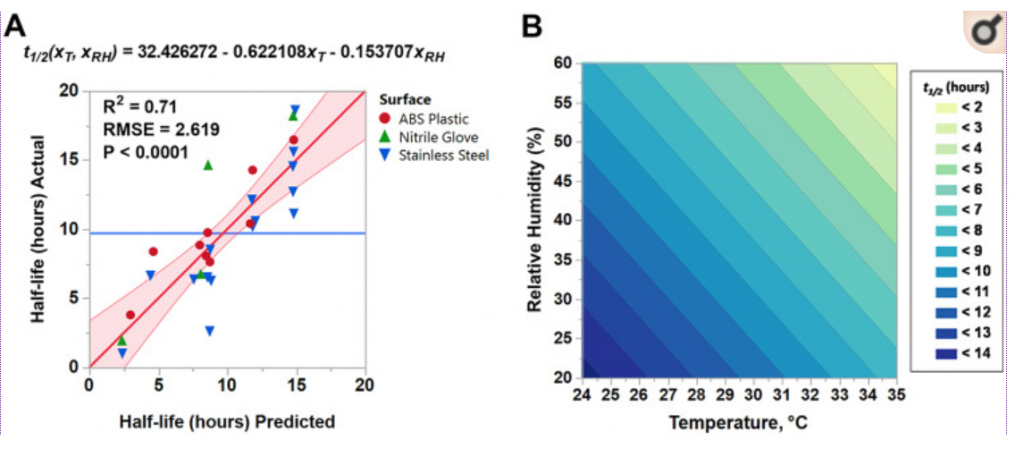Can High Temperature and Humidity Inactivate SAR-CoV-2?
Author: Paula Gonzalez

Coronavirus disease 2019 (COVID-19) was first identified in China in late 2019. Studies have reported that stability of SARS- CoV-2 in cell culture media were deposited onto surfaces under a set of limited environmental conditions. The effects of relative humidity, temperature and droplet size on SARS-CoV-2 stability in a simulated clinically relevant matrix dried on nonporous surfaces have been investigated. The results demonstrate that SARS-CoV-2 decayed faster when in the presence of humidity or when the temperature was increased, however, the droplet volume (1-50 μl) and surface type did not have an significant impact on the the rate of decay
This investigation revealed an approach that could mitigate the transmission of SARS-CoV-2. It can be applied in both a clinical setting, and in public spaces which are critical in reducing the number of COVID-19 cases whilst effective vaccines and therapeutics are developed. Furthermore, SARS-CoV-2 transmission is primarily transmitted through direct person-to-person contact and also believed to transfer via infectious respiratory droplets through aerosol-generating medical procedures. For these reasons, having an understanding of the factors contributing to SARS-CoV-2 persistence on surfaces supports the development of mitigation strategies.
References:
Figure retrieved from the article “Increasing Temperature and Relative Humidity Accelerates Inactivation of SARS-CoV-2 on Surfaces”, Biryukov J,et al, July 2020.)
Article title: Increasing Temperature and Relative Humidity Accelerates Inactivation of SARS-CoV-2 on Surfaces https://pubmed.ncbi.nlm.nih.gov/32611701/